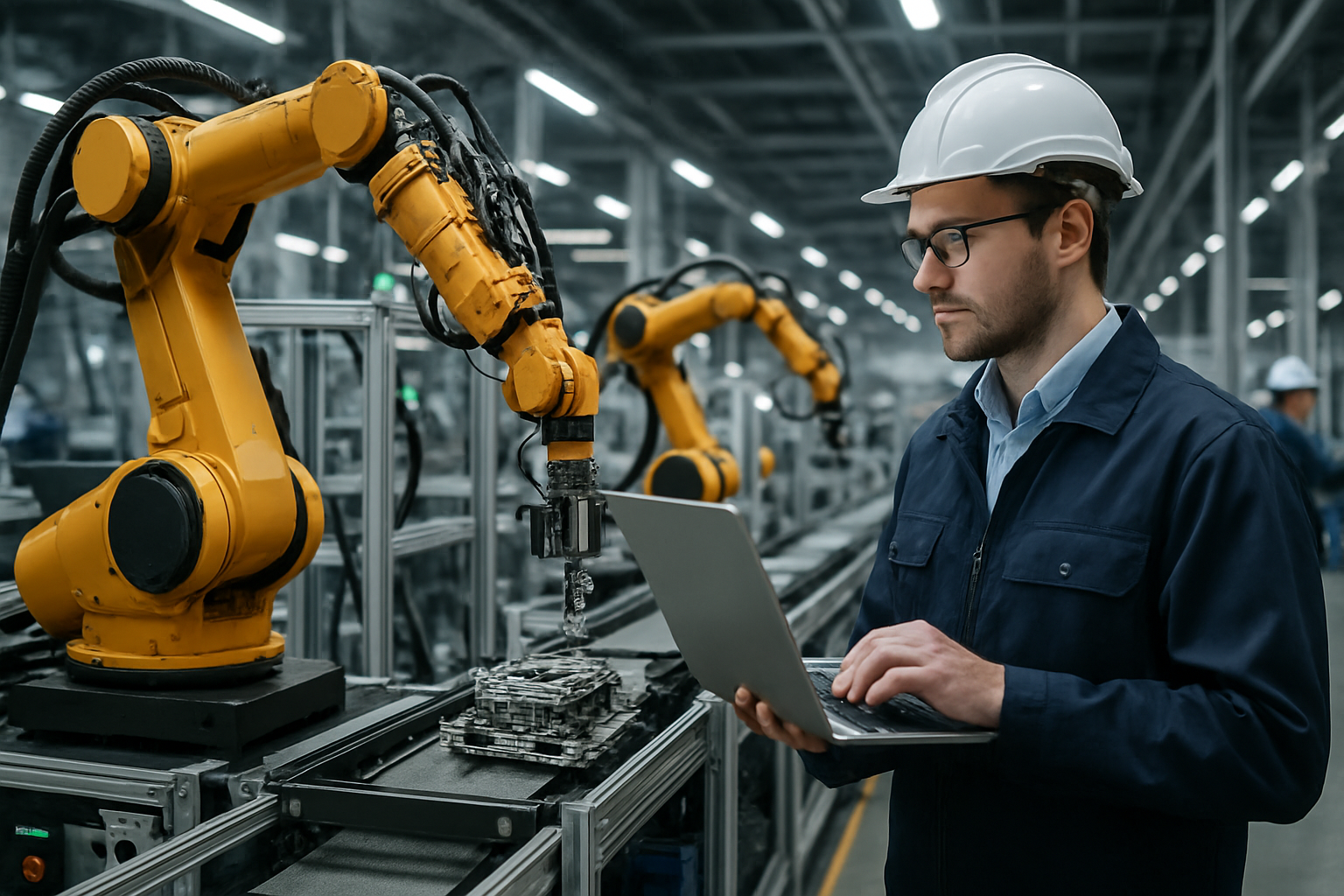Collaborative Robotics: Reshaping Industrial Workflows
Enhancing productivity through human-robot collaboration is revolutionizing industrial operations. This innovative approach integrates advanced robotics with human expertise, creating a synergy that optimizes efficiency, safety, and adaptability in manufacturing environments.

The Evolution of Collaborative Robotics
The concept of collaborative robotics dates back to the 1990s, but it wasn’t until the early 2000s that the technology began to gain traction in industrial settings. Initially, cobots were primarily used for simple, repetitive tasks in controlled environments. However, as technology advanced, so did the capabilities of these machines. Today’s cobots are equipped with sophisticated sensors, artificial intelligence, and advanced safety features that allow them to perform complex tasks and adapt to changing work conditions.
Key Features of Collaborative Robots
Collaborative robots are distinguished by several key features that set them apart from traditional industrial robots. First and foremost is their built-in safety mechanisms. Cobots are designed with rounded edges, force-limiting technology, and advanced sensors that allow them to detect and avoid collisions with human workers. This enables them to operate without the need for safety cages or barriers, making them ideal for shared workspaces.
Another crucial feature is their ease of programming and deployment. Unlike traditional industrial robots that require extensive programming and setup time, cobots can often be programmed through intuitive interfaces or even by physically guiding the robot through desired movements. This simplicity allows for quick redeployment and reprogramming, making cobots highly versatile and adaptable to changing production needs.
Applications Across Industries
The versatility of collaborative robots has led to their adoption across a wide range of industries. In automotive manufacturing, cobots are used for tasks such as quality inspection, parts assembly, and material handling. In the electronics industry, they assist with precision assembly of small components and circuit board testing. The pharmaceutical sector employs cobots for tasks like drug dispensing and packaging, where accuracy and sterility are paramount.
Even in industries not traditionally associated with robotics, such as food processing and agriculture, cobots are finding applications. They can be used for tasks like fruit picking, packaging, and quality control, bringing efficiency and consistency to processes that were once entirely manual.
Impact on Workforce and Productivity
One of the most significant impacts of collaborative robotics is on workforce dynamics and productivity. Contrary to fears of job displacement, cobots are often seen as tools that enhance human capabilities rather than replace workers. By taking on repetitive, physically demanding, or potentially hazardous tasks, cobots free up human workers to focus on more complex, value-added activities that require creativity, problem-solving, and decision-making skills.
This human-robot collaboration has led to notable increases in productivity and efficiency. Studies have shown that when humans and cobots work together, overall productivity can increase by up to 85% compared to either working alone. This boost in efficiency not only improves output but also enhances product quality and consistency.
Implementing Collaborative Robotics: Best Practices
• Conduct a thorough assessment of your current processes to identify areas where cobots can add the most value
• Invest in comprehensive training for employees to ensure smooth integration and maximize the benefits of human-robot collaboration
• Start with pilot projects to test and refine cobot applications before full-scale implementation
• Regularly collect and analyze data on cobot performance to continuously optimize their usage
• Prioritize ongoing maintenance and updates to keep cobots operating at peak efficiency
The integration of collaborative robotics into industrial workflows represents a significant leap forward in manufacturing technology. By combining the precision and tireless nature of robots with the adaptability and problem-solving skills of human workers, businesses can achieve new levels of productivity, quality, and innovation. As the technology continues to evolve, we can expect to see even more sophisticated applications of cobots across various industries, further transforming the way we approach industrial operations and workforce management.





